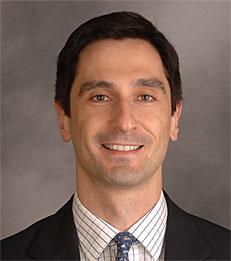Research Highlights
Humanizing Macroeconomic Theory
—


...people, and thus macroeconomic ebbs and flows, react to such things as interest rates, in a less than rational way – because they are, well, human.
In the rarefied world of macroeconomics and monetary and fiscal policy, there are the Keynesians, the New Keynesians, adherents of Fisherism and now of Neo-Fisherism, among others. All have models of whether low interest rates cause inflation or deflation, or neither. In response to the varying hypotheses, NYU Stern Professor Xavier Gabaix is working on what Bloomberg View economic columnist Noah Smith deems one of “the most interesting macroeconomic theory paper[s] in years.” The professor posits that people, and thus macroeconomic ebbs and flows, react to such things as interest rates, in a less than rational way – because they are, well, human.
Professor Gabaix illustrates in “A Behavioral New Keynesian Model,” a preliminary paper, how people tend to react and think in the short term. His analysis “enriches the basic model of monetary policy, the New Keynesian (NK) model, to incorporate behavioral factors.” Here, people behave like people: given a tax cut, they go out and buy more. They don’t anticipate the future perfectly, and so tax cuts and other transfers are seen as windfalls and stimulate the economy in the here and now.
In the professor’s behavioral model, which factors in the imperfect human element, raising interest rates permanently first depresses output and inflation, then in the long run raises inflation. Low interest rates increase inflation for a while, then decrease it over the longer term – a pattern that explains Japan’s experience since the boom of the late 1980s. In Gabaix's theory, individuals don’t think about events several years in the future – they’re myopic and have a short-term mindset. As he puts it, “That myopia parameter in turn affects the power of monetary and fiscal policy.”
Professor Gabaix illustrates in “A Behavioral New Keynesian Model,” a preliminary paper, how people tend to react and think in the short term. His analysis “enriches the basic model of monetary policy, the New Keynesian (NK) model, to incorporate behavioral factors.” Here, people behave like people: given a tax cut, they go out and buy more. They don’t anticipate the future perfectly, and so tax cuts and other transfers are seen as windfalls and stimulate the economy in the here and now.
In the professor’s behavioral model, which factors in the imperfect human element, raising interest rates permanently first depresses output and inflation, then in the long run raises inflation. Low interest rates increase inflation for a while, then decrease it over the longer term – a pattern that explains Japan’s experience since the boom of the late 1980s. In Gabaix's theory, individuals don’t think about events several years in the future – they’re myopic and have a short-term mindset. As he puts it, “That myopia parameter in turn affects the power of monetary and fiscal policy.”
